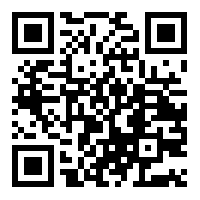preamble
This article tries to realize an application with the shortest path and the lightest mode, only three big steps + 9 small steps, the following is a hands-on teaching process.
Description of Requirements
A systematic description from a product manager's perspective can be found in the following template:
- Overview of requirements: What problem is being solved, what function is being realized, and overall presentation.
- Interactive Interface Description: Input box and output box functions and interactions.
- Provision of functional tools: Finding AI models that are functionally realizable.
relevant model
The following AI models are available for generating article illustrations, and get specific API usage:
model address
Example of a finished demo::Click to view
Requirements realization steps
1. Overall description of needs
Develop an application based on Gradio that implements the following functionality:
- After the user enters the content of the public post, click on the One Click Generate button.
- Automatic generation of titles, abstracts.
- Automatically generate English Prompts based on abstracts and generate article graphics.
2. Front-end core modules
- User input box: Reminds the user to enter the content of the public post.
- Header output box::
- Automatically generate 5 titles (64 characters or less) that are suitable for public numbers.
- Left-right layout, streaming output, and separate presentation of thought process and final output.
- Summary Output Box::
- Automatically generate a summary (120 words or less) suitable for public numbers.
- Left-right layout, streaming output, and separate presentation of thought process and final output.
- Article with image Prompt output box::
- Prompt is automatically generated in English based on the summary.
- Left and right layout with streaming output.
- Editable and supports regeneration.
- Output box for article graphics::
- Generate an image based on the generated English Prompt.
- Generates 2 images of size 1024x500.
Visual style: techy cyan + purple.
3. Server-side API
Title, Summary, Prompt Output API
import requests
import json
from PIL import Image
from io import BytesIO
url = 'https://api-inference.modelscope.cn/v1/images/generations'
payload = {
'model': 'djyzcp123/gjerc', # ModelScope Model-Id, required
'prompt': 'A golden cat' # required
}
headers = {
'Authorization': 'Bearer 替换为你的魔搭token',
'Content-Type': 'application/json'
}
response = requests.post(url, data=json.dumps(payload, ensure_ascii=False).encode('utf-8'), headers=headers)
response_data = response.json()
image = Image.open(BytesIO(requests.get(response_data['images'][0]['url']).content))
image.save('result_image.jpg')
Generate code with AI and test polish in the cloud Notebook
1. Code generation
- Code can be generated automatically using large models such as Cursor, DeepSeek-R1, QwenMax-QWQ, Claude 3.7, etc.
- The code is saved as
.pyDocumentation.
2. Run the code in Notebook
- Notebook comes pre-installed with the environment right out of the box.
- Notebook Address
- (of a computer) run
.pyDocumentation:
!python /mnt/workspace/文件名.py
3. Testing and optimization
Front-end acceptance
The front-end interfaces generated by the four tools are different, but all of them fulfill the requirements.
| Cursor | DeepSeek-R1 |
|---|---|
 |
 |
| QwenMax-QWQ | Claude3.7 |
 |
 |
Server-side acceptance
Functionality works as expected, and the generated Title, Abstract, Prompt, and Images are as expected.
Deployment goes live
1. Basic setup of CreateSpace
- New Creation Space
- Use the platform's free CPU resources, which are configured by default.
2. Key step: API key protection
- Modify the code to store the API Key in an environment variable.
Pre-modification:
Modified:
import os
MODEL_API_KEY = os.getenv('MODEL_API_KEY')
3. Uploading documents and posting them online
- Successful debugging in the Notebook
.pyRename the file toapp.pyand uploaded.
Once you've done that, you'll get a link to share:
summarize
Everyone is an app developer, turn on the magic with AI and build thousands of apps!
The application is infinitely expandable, e.g:
- Add article embellishments and microblogging copy.
- Illustration style optional.
More possibilities are waiting for you to explore! 🚀

































